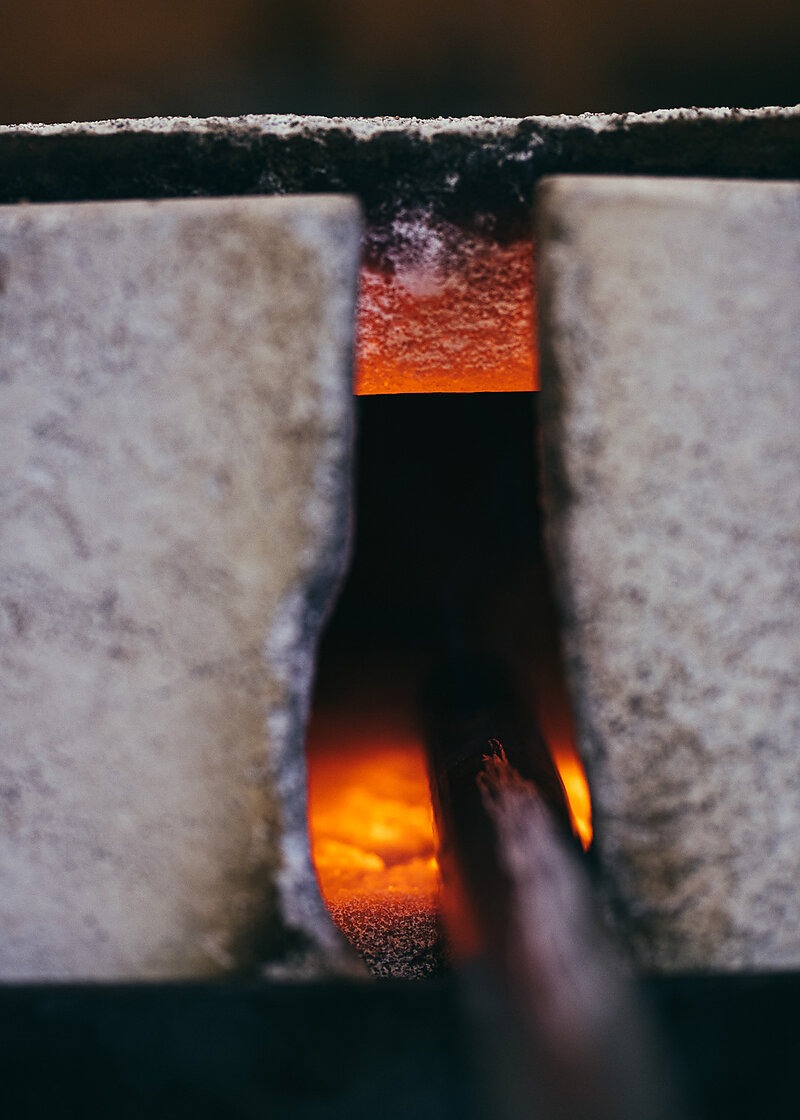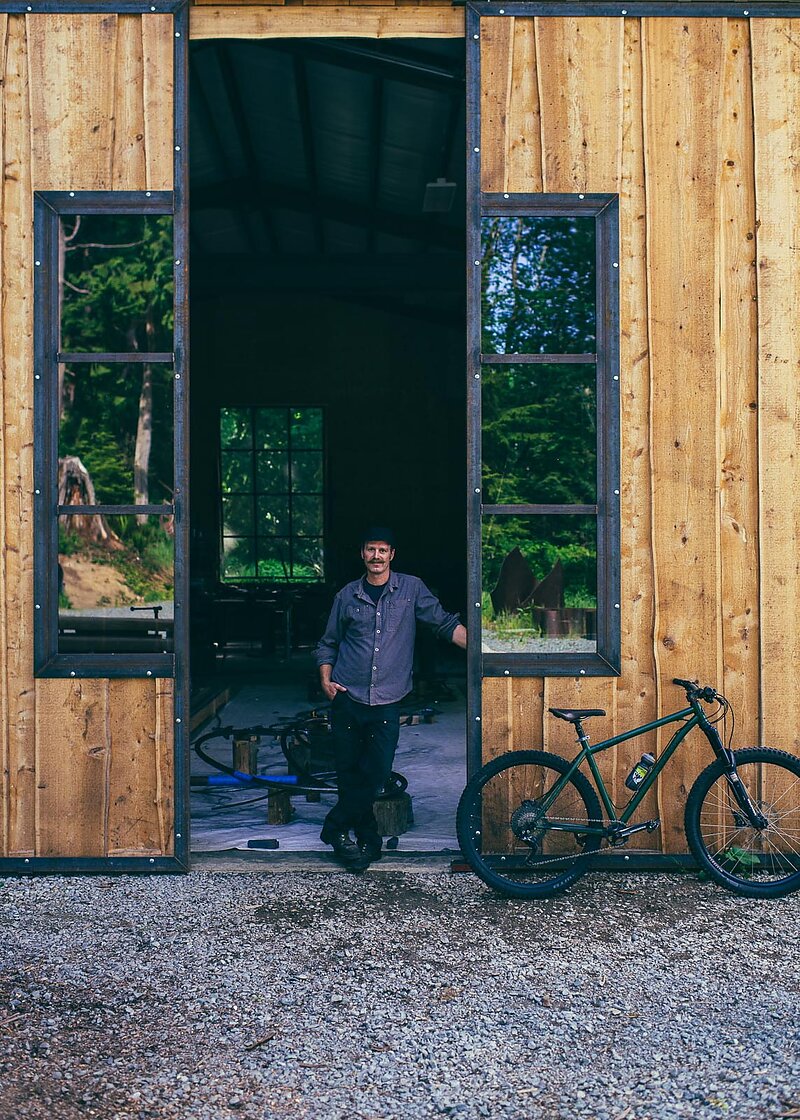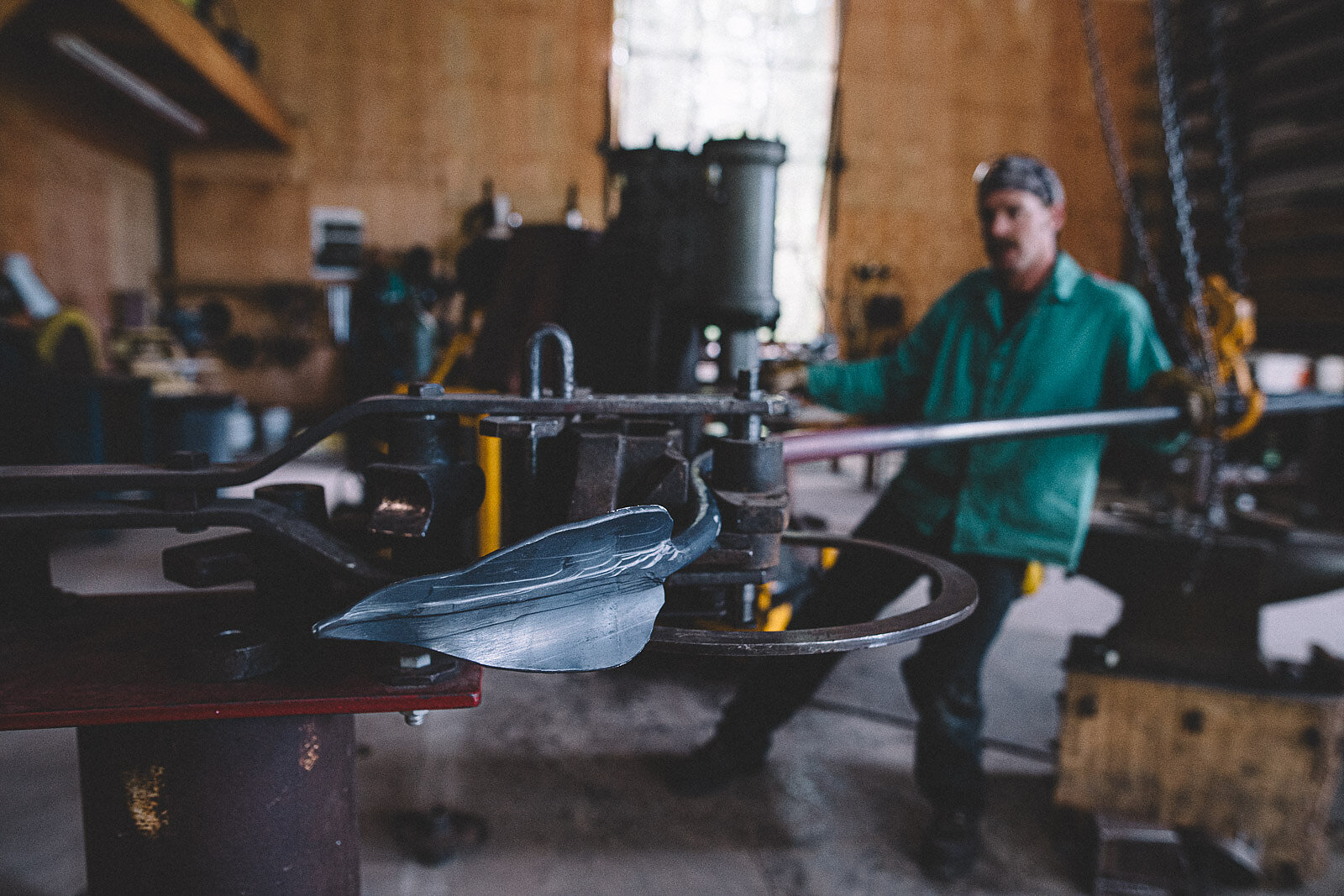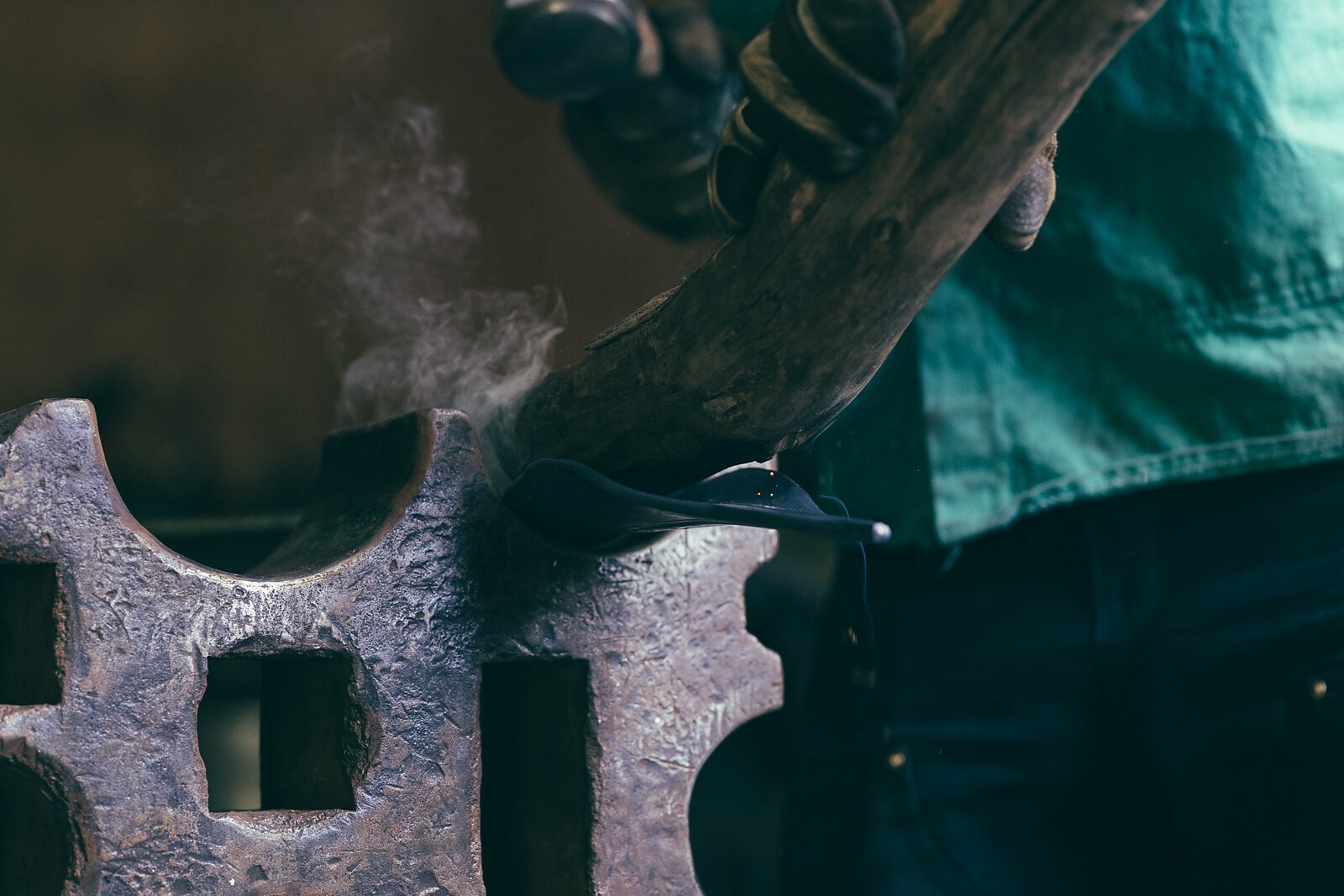
Metallic Musings Aaron Loveitt’s Explorations of Art and Earth
Words by Jann Eberharter | Photos by Paris Gore
A thicket of bronze vines lays on the ground in Aaron Loveitt’s studio, branches weaving through each other in a methodical and ornate layout.
This installment, which will eventually be a driveway gate for a client, has been his focal endeavor for the past four months, a suitably solo activity that’s kept him busy during the coronavirus lockdown.
As the sole proprietor of Canopy Art and Iron, Loveitt’s Bellingham, WA-based business that encompasses everything from fine art and public installations to commissioned metalwork and architectural fabrication, this piece has been a good way to devote his attention to something that’s long been just an idea. He doesn’t often take jobs this massive, so when he does, it’s nice to have time on his side.
To grasp the full meaning of Loveitt’s work, one must first understand the mindset he approaches his designs with. As he puts it, his creations are an exploration of the nexus of time, environment and culture. He tries to use as much scrap metal and recycled materials as possible and his artistry is not only in the processes of blacksmithing, glass casting, woodworking and mixed media, but also in the philosophic explorations he takes while doing so.
He’s fashioned the outline of an oldgrowth stump with a half-inch steel plate, traced the path of the Nooksack River out of an old railroad rail, and used salvaged steel to create commentary about ideological shifts and environmentalism within religion. With pieces such as these, it’s evident Loveitt contemplates the many facets of life and translates these thoughts into the physical realm. It’s like his brain is an algorithm that takes in human experience and cultural artifacts, and manifests them into physical creations that make people stop, look and ponder.
“My philosophy about life is that nature has the ultimate design and functionality,” Loveitt says, “and that I can draw a lot of creative and design sensibilities from studying and appreciating the natural world. So I like to put myself in a head space and an environment that inspires and stimulates some ofthat creative growth.”


His newly built studio is among the trees of the Chuckanut Mountains and a piece of art itself. A Chromag hardtail leans against the door, and a backyard trail dips into the woods not far beyond his house, which is just up the hill. Loveitt found his way to Bellingham in 2010 and was an integral part of the downtown Alley District, which included the Hub Community Bike Shop and several other artists. The now-defunct space had no shortage of like-minded neighbors and curious passersby poking their head in from the Interurban Trail alleyway. He quickly built up a plethora of friendships and a robust clientele by being at the center of such a creative space. When the block was leveled to make way for a new apartment building, he moved to his current location, closer to his natural influences.
Loveitt grew up in Vermont and was always active as a kid, building tree forts and exploring the Green Mountains. This environment undoubtedly laid the foundation for his artistic exploration of nature. He attended Alfred University School of Art and Design in Alfred, NY earning a bachelor’s as a sculpture major and art history minor. From there, he found his way to the Pilchuck Glass Schoolin Stanwood, WA to further his education in glass working.
He called Portland, OR home for a few years, where he took on commissions and hosted a handful of exhibitions. While the lucrative side of business was often the more functional pieces that utilized his metalworking skills, he also had the opportunity to create public art such as a finish arch for the Portland Triathlon and a collaborative welcoming gate commemorating indigenous heritage for the Confluence Project, a series of park installations along the Columbia River.
Some experiments used light, such as a 20-foot-tall graph depicting the 2008 U.S. stock market crash constructed with fluorescent tubes and a steel skeleton alongside I-5. As his art progressed, the focus of Loveitt’s work morphed from glasswork to metalwork and eventually into blacksmithing. The latter two forms of art come with more freedom, not only from being able to construct utilitarian everyday objects but also stylistically and creatively.

“That’s an inspiring lineage to carry on,” Loveitt says of working with metal. “It’s a good place to be forever a student within your craft—I will never master what I do, I am always learning, every project is different. So, if I’m going to be a student for life, metalsmithing and blacksmithing is the school I want to go to.”
The disciplines are also much more suitable for running a business. From forging railings or fabricating furniture or sculpting decorative shelving brackets to building his own shop, the possibilities are infinite. As both artist and fabricator, his work blends the two, which is often why people come to him with concepts and ideas of their own. Thanks to his broad range of skills, Loveitt has the freedom to pick and choose the projects he takes on, meaning he’s continually able to create for both his clients and himself.
The beauty of everything he creates is in its existence within two sometimes contradictory dimensions. Working with metal is inherently industrious, not only in the materials but also the process. Morphing and manipulating metal necessitates high temperatures, heavy machinery and physical force. The process is not typically described as elegant. Yet Loveitt has found a way to bring grace into the pieces through his earthly influences. He finds connection to the world via the artistic process, even if the physical process of metalwork is far from natural.
“Foremost, I’m an artist that appreciates creating things of conceptual value for our community and our culture,” he says. “I think that brings an important role in my path as a craftsman, that I can have a greater purpose to create a dialogue and perspective around our place in the world.”

By the time the gate is finished, he’ll have put more than 300 hours into it. Choosing to work strictly with bronze isn’t something Loveitt would have done on his own, but it was important to his client. For Loveitt, figuring out how to create something so massive with a metal that is both soft and heavy simply became another layer of the process.
When it comes to fabricating things that have only existed before in someone’s mind, every part of the process is new. Be it art or a functional piece or both, the conceptualization and production is done however he sees fit. As someone who is an artist, metalworker and philosopher—a true renaissance man—this freedom is inspiring.
“With public art and large-scale work and metalworking in general, there’s always these kind of mechanical challenges that you encounter,” Loveitt says. “Whether it’s the hinges on this gate, the forces at play in its natural environment or the theme that the work aims to touch upon, there’s so much backstory and investigation and invention that happens with every job that isn’t necessarily portrayed on the surface level but is just inherent in all these projects—I love that shit.”